Y-12 Blog
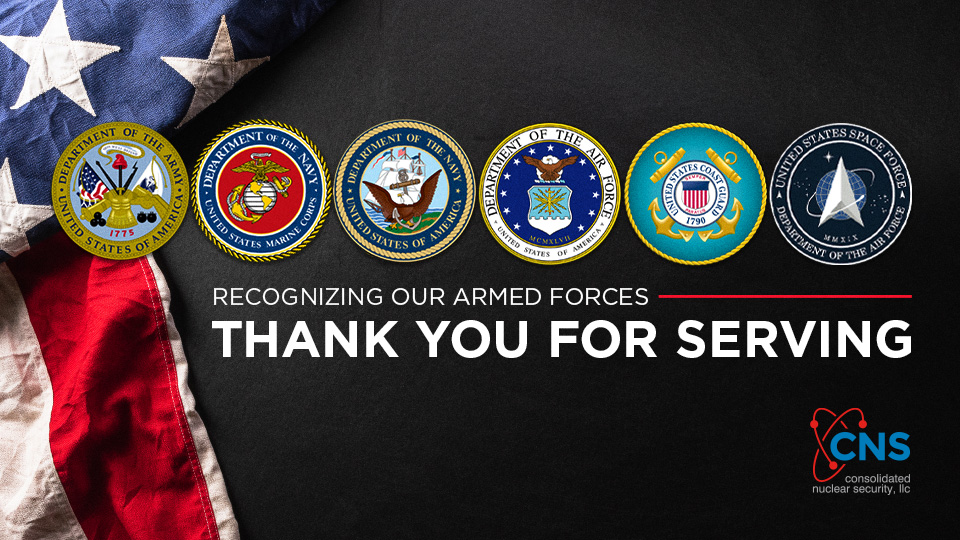
.Celebrating Armed Forces Day
Being part of a military family has challenges and benefits unique to military service. Our servicemembers give up a lot of freedoms to protect our nation, but so do the families supporting them. These families are often unrecognized for their role in service to the nation. They often don’t have a choice regarding where they will live and work. The servicemember is deployed for months at a time, leaving the family behind to deal with the home front.
That longing for togetherness as well as concerns for safety are heightened when the servicemember is deployed to a combat environment.
“The most challenging part of being a military family is when the servicemember gets deployed to a remote location and communicating is very limited,” said Lisa H., information specialist in CNS Communications at Y‑12. “This is especially challenging when the remote location is in a war zone. When your family member is away, you try to keep busy with day‑to‑day challenges of life, but your mind is always on the one deployed.”
Those extended deployments can stress the family environment, but they also create opportunities.
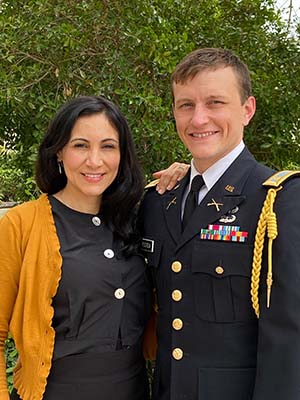
Y‑12er Rose R. stands with her husband, Major Brennan R., at his promotion ceremony.
Rose R., Y‑12 administrative assistant for Nuclear Safety, describes her life as an adventure.
“Being a military family is different to lives as nonmilitary families, as expectations for your level of flexibility and resiliency are much higher than in regular civilian life,” Rose said. “We have moved 7 times in the past 14 years to places like Vicenza, Italy; Tunis, Tunisia; and my husband is currently stationed in Mali. It can be difficult to plant deep roots anywhere, but you have roots far and wide, across the U.S. or the world, wherever your posts may be.”
Like their active‑duty counterparts, many military families develop deep bonds with other families where they’re stationed.
“Your military friends and associates become your family members, especially when serving overseas,” Lisa said. “You are in a small, remote group with the same purpose. They are family you will always maintain contact with, just as you would your immediate family. If you need help, your ‘family’ will be the ones there to assist.”
The bond that military family members who work at Pantex and Y‑12 share also strengthens their sense of pride to be part of the sites’ missions, knowing the work they do directly affects their servicemembers’ lives.
As both seen and unseen sacrifices continue to be made daily for the protection of our nation, Pantexans and Y‑12ers would like to say “thank you” to all active servicemembers, veterans, and military families for all they give in service to this country.
May is the month to celebrate the mothers in our lives. Some lucky employees even have the privilege of working with their mothers on-site.
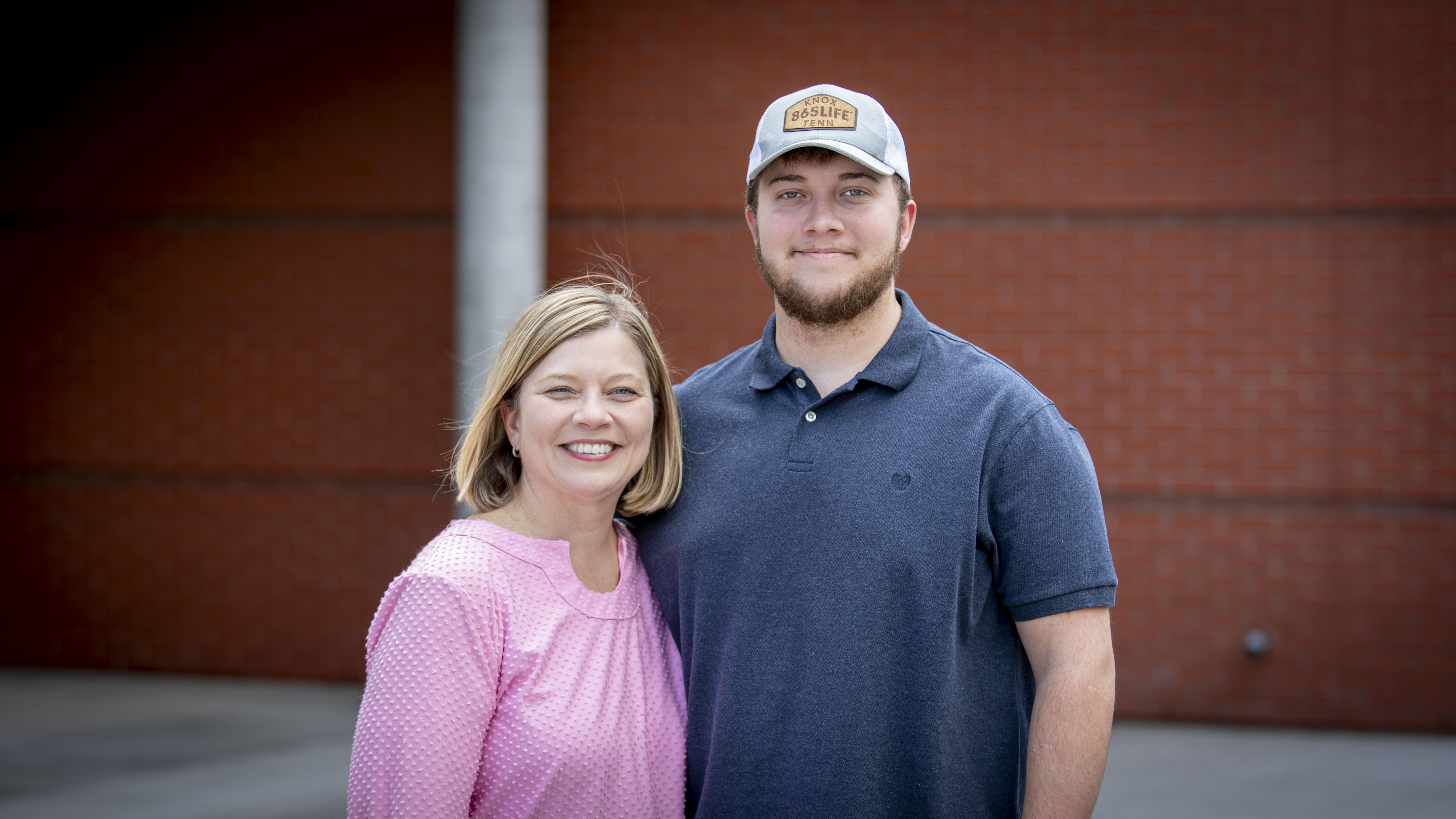
Meet Y-12er mother and son, Patty and Bryson B.
Bryson B., roads and grounds laborer for Y-12 Infrastructure, joined Y-12 in 2021 and thought it was especially neat to see the place his mom and dad worked for many years.
“The best part of working in the same company is being able to spend time with each other more often and occasionally spend time together at work as well,” Bryson said.
Patty B., scheduler in Y-12 Project Controls, who started at Y-12 in 2011, says while their fields of work aren’t related, as a mom, she loves that they have a shared mission at work.
“It’s awesome knowing we both have the opportunity to help our site and our nation in some small way,” she said.
Bryson is grateful for the example his mom has set for him throughout his life.
“My mom has always shown me hard work, respect, and honesty with everything she does, and I try my best to replicate and follow these great examples,” he said.
To say that Patty is proud of her son would be an understatement.
“Bryson has accomplished many things in his life,” she said. “I am thankful and proud of each one, but I am most proud of who he is. He is such a wonderful person. He is a sweet soul, always keeps you laughing, and makes life fun. He is a complete joy to be with, and of course to me, the best son in the world.”
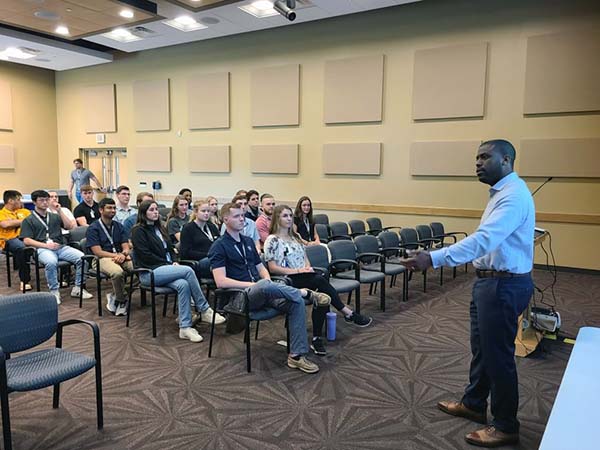
Production Research, Development, and Integration (PRD&I) cultivates student talent pipelines that enhance skills essential for sustaining, stewarding, and modernizing Pantex and Y‑12’s production capabilities.
Essential skills include multiphysics modeling, production process modeling, advanced manufacturing, materials science and development, electrical engineering, nuclear criticality safety, and emergency response.
“Y‑12 relies on its Development organization for a ready cadre of subject matter experts that can be called upon to solve any plant problem. The Critical Skills Program brings in promising replacements to shore up our talent pipeline in not only our traditional areas of expertise, but also in new areas that are emerging such as automation and robotics, modeling, and advanced manufacturing,” said Randy Dziendziel, senior director of Development.
New talent pipelines for CNS include R&D fellowships, co‑op students, and researchers‑in‑residence — a program that allows employees to conduct research at universities for extended periods of time. These initiatives provide a range of opportunities for students to work with Pantex and Y‑12 technical staff on projects that develop expertise important for stewarding the sites’ production capabilities.
An example of multiple programs combining is how one Texas Tech student went from an undergraduate chemical engineering major to developing technical collaboration that creates new capability for the plants.
In 2022, Serée S. completed a Minority Serving Institution Partnerships Program‑funded internship with Pantex Development. In 2023, she came to Y‑12 to intern in Development. She has since been hired as a full‑time Y‑12 employee serving as a Researcher-in-Residence at Texas Tech University (TTU) for Y‑12. She is working on her Ph.D. in computational chemical engineering and expects to graduate in 2026.
Serée dedicates 60% of her time to research and development efforts, focused around solving problems and supporting projects at Y‑12. “I am passionate about bringing chemical engineering process modeling to CNS, Y‑12, Pantex, and the NNSA as a whole because I believe it will be one of the biggest contributors in integrating the advantages of modern technological advances in engineering with our mission,” she said.
Her remaining energy is focused on serving as a liaison between TTU and CNS, a role she is equally as passionate about. This position serves to further enhance the talent and technology/workforce capability transfer pipeline between schools and industry and highlight viable and enticing career paths for students.
Rapid advancements in technology require an increase in the energy and workforce dedicated to those enhancements, making the need for this student and capability pipeline urgent. Without those resources, our current and future production capabilities needed to deliver the mission are inhibited.
To address this need, the Critical Skills program helps universities understand what skills are needed. This allows schools to prepare students who are highly specialized for the work at Pantex and Y‑12. Through the program, CNS has developed relationships with 10 university departments across three universities and has funded 31 students on fellowships.
The Plant Directed Research and Development (PDRD) program builds off these relationships in an effort to recruit and retain people with the necessary skills to meet current and future production mission needs for Pantex and Y‑12.
Accordingly, Y‑12 PDRD Program Area Lead Mike Ellis and Pantex PDRD Program Manager Ed Graef developed a program that provided funding to directly hire 27 positions and build a talent pipeline. “The development of Pantex and Y‑12’s technical bench strength is vitally important to supporting our nation’s nuclear deterrent mission,” said Ellis. “I am proud to enable this effort and grow our technical expertise for current and future mission space.”
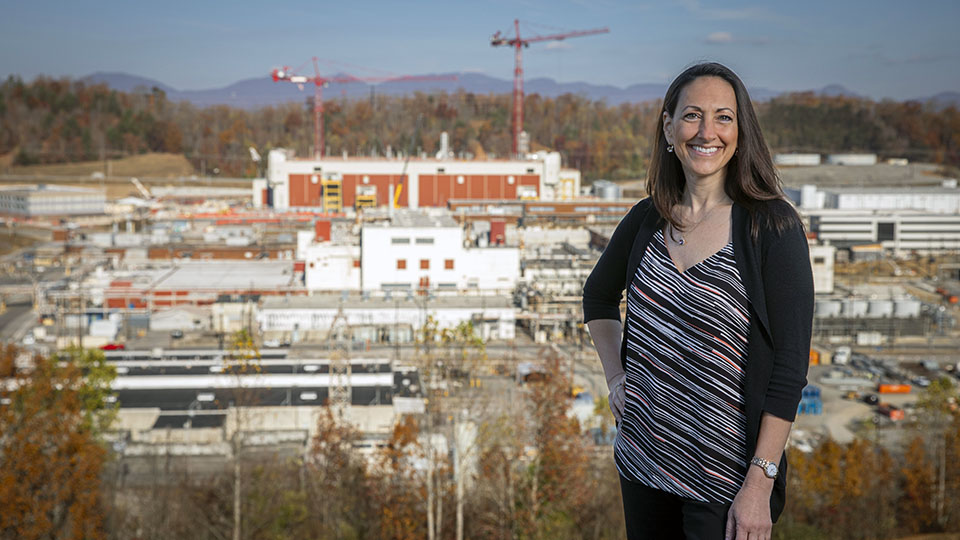
Take 5 minutes to learn about Julie Huff, UPF Commissioning director. All views and opinions are the employee’s own and do not necessarily reflect those of CNS.
Employees of Y‑12 may often feel like they’ve taken a ride in the DeLorean time machine as they travel through the site. Older facilities provide a glimpse into the 1940s and the historic deliveries during the Manhattan Project, while construction of projects such as the Uranium Processing Facility (UPF) and the Lithium Processing Facility (LPF) thrust the landscape into the future.
Julie Huff, UPF Commissioning director, has had the opportunity to work in a number of production facilities across the site throughout her career at Y‑12. Her experiences in older facilities have proven to be an asset in her current role.
“I’ve worked at Y‑12 for almost 23 years now, and I started my role in UPF Commissioning in June 2022. My primary role is to lead the charge to ensure UPF meets all the requirements to operate as a nuclear facility: preparing the people, the paper, and the processes to successfully pass the Operational Readiness Reviews. Preparing the facility to operate also means planning for transition logistics and preparing current Y‑12 operations and personnel for when UPF is construction complete,” Huff said. “I’ve had the good fortune of being able to see and experience the current facilities and work with a wide number of Y‑12 organizations in my years here, and that has helped me tremendously when thinking through the impacts on our Y‑12 employees now and in the future.”
During her tenure at Y‑12, no matter the facility or organization that she has been a part of, Huff has continued to be impressed and inspired by the dedication and perseverance of fellow Y‑12ers and those at Pantex.
“I believe the environment you’ll find at Y‑12 or Pantex, the level of dedication of the people, cannot be beat compared to other places of work,” Huff said. “You feel and appreciate that every job serves an important purpose to our sites as a whole and makes a difference in delivering the mission. This continues to energize me and motivate me every day.”
How has working for CNS changed or reinforced your thoughts on our mission?
I am a nuclear engineer, and I have always been passionate about the capabilities of nuclear energy, but I don’t think I fully grasped the magnitude until I came to work at Y‑12. My grandfather and his brothers served in WW2, and it was when I began working here and seeing the work that we do and the history of the Manhattan Project that really made me fully appreciate what Y‑12 has done for this country. The work done here to help end WW2 did not just impact the world in the 1940s, but continues to this day. The world and war forever changed with our capabilities and with deterrence.
What work advice would you offer someone who is new to Pantex or Y‑12?
My top piece of advice would be that before looking outside the company to grow in your career, explore opportunities within your site in a different organization. I like to say that Y‑12 is its own little city that requires different roles, skills, and knowledge. You can have an amazing career here and work your way up this way.
What’s your top bucket list item and why?
My top bucket list item is to visit Antarctica, and maybe even run in the Antarctica Marathon that is held every year. Yes, there is a marathon in Antarctica. My goal is to visit all seven continents, and Antarctica is the hardest one on my list. It just looks so beautiful, and I hope to see it someday.
Who in your life has inspired you the most and why?
My daughter. She always amazes me and challenges me to be a better person. I love seeing the world through her eyes, and I want to make the world a better place for her now and into the future.
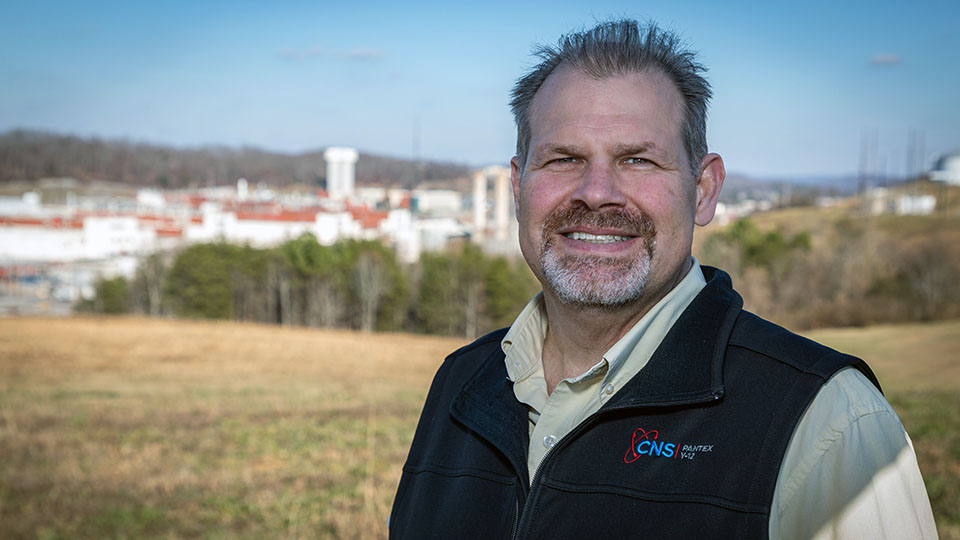
Mike Robinson is in the middle of a climb. It’s a metaphorical climb up a very real mountain of infrastructure modernization work at both Pantex and Y‑12. The work includes the programmatic plans and master site plans at both sites that identify new equipment and infrastructure to be installed and constructed. Robinson, vice president of Project Management, has purview of all the capital projects and many expense projects at both Pantex and Y‑12, excluding the Uranium Processing Facility (UPF). He’s been in his current role for a little over a year now, but as a principal vice president with Bechtel, it’s a continuation of a lifelong career.
“The reality is in 30‑plus years with Bechtel, I’ve moved over a dozen times and covered twice that many different projects or positions; it’s going where the work is needed to address challenges,” Robinson noted.
One challenge that surprised Robinson when he joined CNS was the gravity of the work versus the state of the buildings it’s completed in.
“Our people — not just within Project Management, but across CNS — find ways to be successful in facilities that have overreached their life expectancy,” Robinson said. “In FY 2023, under an increasing workload, CNS not only met but exceeded production goals. Integrated teams across CNS especially demonstrate just how important each person is to overall mission success.”
Project work is increasing to meet both current repair needs as well as to prepare the sites for the future. Buildings like the new fire station and Emergency Operations Center at Y‑12 are clear examples of how new facilities improve not only the work, but also morale. For anyone who works on projects, the on‑the‑job daily problem‑solving has a tangible outcome.
“The passion for the mission extends across the board, throughout the different departments and up and down the ladder, so to speak,” Robinson said.
How has working for CNS changed or reinforced your thoughts on our mission?
Not changed, but reinforced my thoughts on the mission. I appreciated that before, but I’ve gained additional insights into specifics of what projects we are doing to support future mission needs. I also think we’re at a time when the global environment is evolving, and it fully reinforces why our mission is needed or important. We want to play our part by safely and efficiently implementing our infrastructure modernization.
Are you doing what you envisioned as a young adult? If so, describe how you got here.
Absolutely not. I would describe it as a long strange trip. My dad and my uncle were engineers, and my brain seemed wired to build and disassemble things as a kid. I fed that spark by getting a mechanical engineering degree and then headed into the field working construction. I’ve been involved in projects and operating facilities for my entire career. I’ve always gotten satisfaction from completing projects or solving problems, and I have fond memories of the people on the teams we’ve developed along the way.
What work advice would you offer someone who is new to Pantex or Y‑12?
Ask questions. Seek to gain insight from your coworkers about both the work at hand and how it fits into the mission. Getting back to similarities in the sites, it is that general pride in support of the mission that is inspiring. I think that’s unique to these sites because there’s a longer view than just any one project.
Why is it important we hold ourselves accountable in our daily tasks?
strong>
We’re all part of some plan; we all have roles and responsibilities to make it work. By holding ourselves accountable, we’re working to support the mission. If you’re not doing what you’re accountable for, you’re letting someone down. As an example, all projects have challenges — there hasn’t been a project in the history of the world that hasn’t had challenges. Good teams identify and attack issues, so being accountable prepares you to address the challenges of that project. It takes the village to complete our projects, and we need to be accountable so we don’t burden each other.
